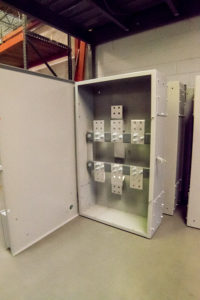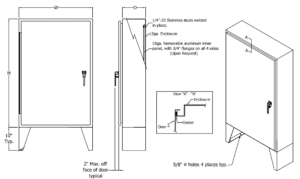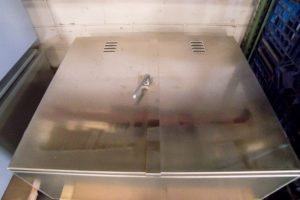 The current transformer (CT) converts primary current into a secondary current of smaller or larger value through a certain transformation ratio. Most times, the current transformer reduces large current for protection, measurement, and other purposes. Due to the large currents flowing in, it is important to protect users and operators from possible electric shocks. This is achieved with the help of CT cabinets.
The current transformer (CT) converts primary current into a secondary current of smaller or larger value through a certain transformation ratio. Most times, the current transformer reduces large current for protection, measurement, and other purposes. Due to the large currents flowing in, it is important to protect users and operators from possible electric shocks. This is achieved with the help of CT cabinets.
The CT cabinets are an essential part of electrical metering systems and are used both indoor and outdoor and in homes and industries. They are the enclosures in which the current transformers are mounted in. The cabinets are also made to prevent electrocution by setting up a physical barrier.
Types of CT cabinets
 Manufacturers of CT cabinets always ensure this equipment meets the safety standards of the Underwriters Laboratories (UL) and/or the National Electrical Manufacturers Association (NEMA). Today, the standards for current transformer cabinets are basically the UL Type 1 and the NEMA Type 3R.
Manufacturers of CT cabinets always ensure this equipment meets the safety standards of the Underwriters Laboratories (UL) and/or the National Electrical Manufacturers Association (NEMA). Today, the standards for current transformer cabinets are basically the UL Type 1 and the NEMA Type 3R.
However, there are also other popular CT cabinets with various NEMA ratings. Also, NEMA ratings specify the various types of environments where you can use electrical enclosures. These include:
- NEMA Type 1,
- NEMA Type 2,
- NEMA Type 3,
- NEMA Type 3R,
- NEMA Type 4,
- NEMA Type 4x,
- and more
Current transformer cabinets can also be classified according to their designs. These include:
The fabrication of CT cabinets

Most of the electrical enclosures in the industry are often metallic. For current transformer cabinets, the most common materials are galvanized iron, carbon steel, aluminum and stainless steel. Techniques such as welding, cutting, and bending are often used in the construction of CT cabinets. However, cabinets made of synthetic materials are not uncommon. NJ Sullivan is a custom metal fabrication company and does not manufacture cabinets from synthetic materials.
The doors
The doors for electrical cabinets are often constructed in cold-rolled sheets. All doors must open only at least 120° laterally. They must have a handle that facilitates their operations. The hinges must be galvanized, chromed, nickel-plated or made of stainless steel, bronze or aluminum. These hinges must be strong enough to rigidly secure the door of the structure. Note that during installation, care has to be taken so that the door doesn’t lose its protective powder coating.
By knowing the ratings, design, and enclosure material, it should be easier for you to install and utilize your CT cabinets. This could also prevent you from making costly mistakes during installation.